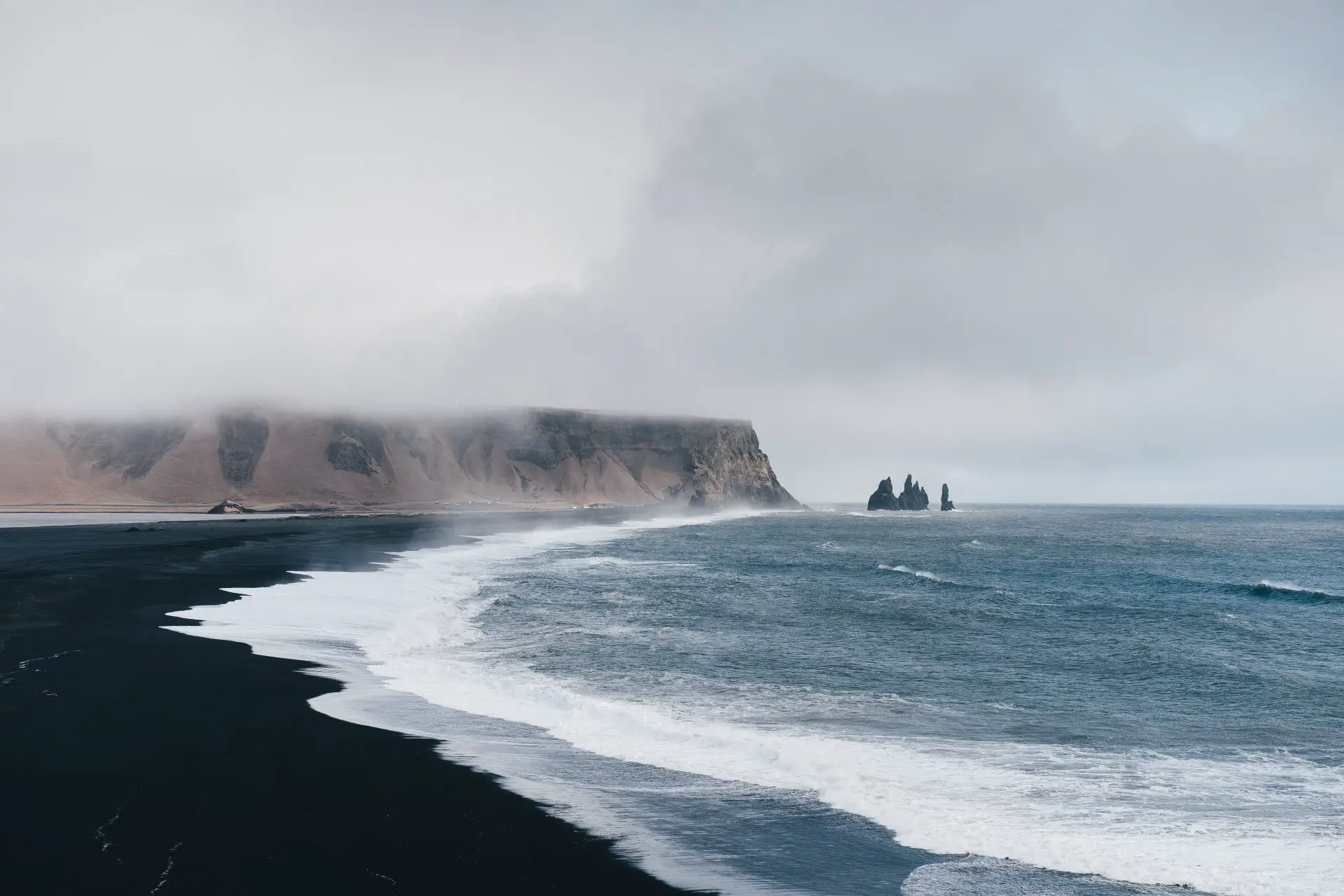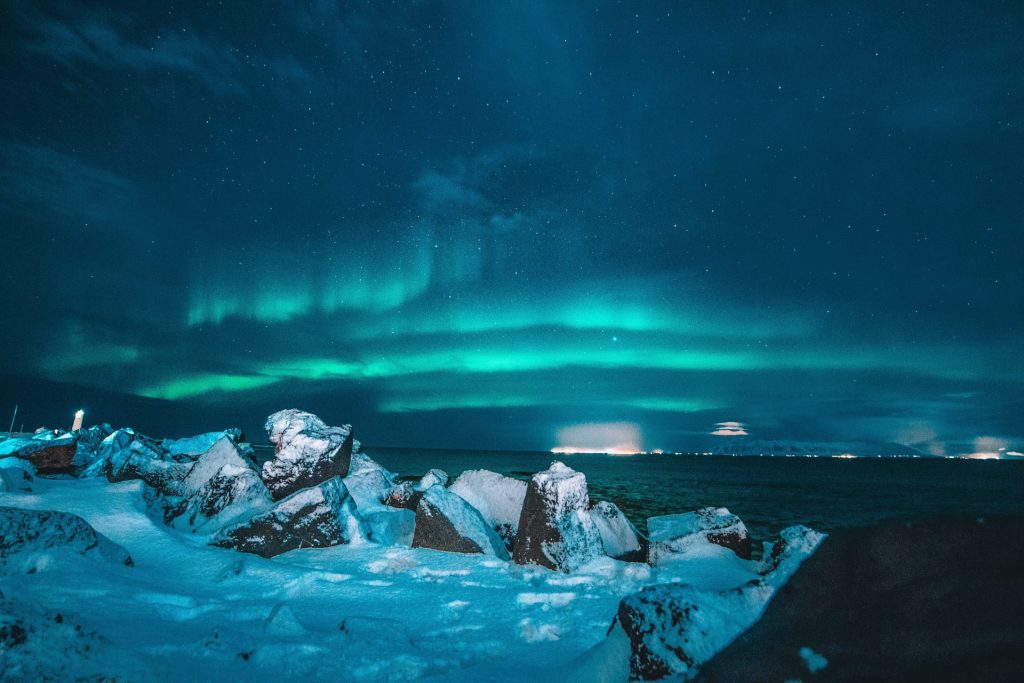Iceland Surf Guide: Know Before You Go!

Iceland Surf History
Iceland's surf scene began in the early 2000’s with international surfers beginning to display interest in exploring the icy breaks Iceland offers. Travelling from around the world these surfers started exploring the remarkable waves along Iceland's shores, contributing to the rise of a unique surf culture. Today, you can ride the same waves that sparked the passion of those early surf pioneers, connecting with the untamed beauty of this Arctic island. This has become even more popular now due to the progressions in efficient winter wetsuits and gear to keep you comfortable for prolonged periods of time.
Iceland Quick Facts
- Continent - Europe
- Population - 113.9 Million
- Internet - 26 Mbps (average)
- Average Trip Length - 7 days
- Power - 230V/50Hz
- Currency - ISK 1000 = USD 7.48
- Tap Water - Yes, Safe To Drink
- Cashless - Yes, Cards Okay
- Religion - Evangelical Lutheran Church of Iceland (Majority)
- International Air Carrier - Finnair
- Dinner - $20
- Beer - $7.01
- Coffee - $4.75
Where To Surf In Iceland
While Iceland may not be the first place that comes to mind for surfing, its coastline is dotted with hidden treasures. The Reykjanes Peninsula, conveniently close to Reykjavik, offers accessible breaks like Gardur and Garðskagi. On the remote Snæfellsnes Peninsula, you'll uncover uncrowded waves at spots like Ólafsvík and Rauðisandur. If you're up for a unique Arctic adventure, the North Coast's iconic breaks at Hvammstangi and Húnaflói await. Iceland's surf breaks do offer a variety for surfers to choose from, however these icy waters are not for the faint hearted! Beginners can ride gentle waves at Gardur and Ólafsvík, while experienced surfers can challenge themselves at reef breaks like Rif and Thorli. With its diverse coastline, Iceland stands as a distinctive destination where adventurous surfers can find their ideal wave amidst stunning natural landscapes.
Best Time To Surf In Iceland
The surf season typically runs from September to April when Atlantic swells deliver consistent waves and favourable offshore winds. Nevertheless, Iceland's weather can be unpredictable, so be prepared for rapidly changing conditions. Summer months, from June to August, offer smaller waves but extended daylight hours for more time in the water.
Iceland The Country
Iceland is not only a surf destination; it's a land of dramatic landscapes and natural wonders. Explore geothermal marvels like the Blue Lagoon, hike to majestic waterfalls like Skogafoss, or embark on a glacier tour in Vatnajökull National Park. These adventures will leave you speechless from Iceland's untouched landscapes.
Culture In Iceland
Immerse yourself in Icelandic culture, known for its rich storytelling traditions, folklore, and vibrant arts scene. Attend local festivals, such as Þjóðhátíð in Vestmannaeyjar, or visit quirky museums that delve into Iceland's unique history and traditions. Your cultural journey in Iceland will be as enriching as your time spent in the surf.
Food In Iceland
Iceland's culinary scene is a delightful exploration of Nordic flavors and locally sourced ingredients. Savour dishes like fresh seafood, hearty lamb stew, and the infamous fermented shark. Don't miss out on trying Skyr, a traditional Icelandic yogurt, and indulging in pastries like kleina. Your taste buds are in for a treat on this culinary adventure.
How To Get Around In Iceland
Navigating Iceland is relatively straightforward, thanks to its well-maintained Ring Road (Route 1) that encircles the island. Renting a car is a popular choice, allowing you to explore remote surf spots and natural wonders. Additionally, domestic flights are available for reaching more remote regions, and local buses offer a budget-friendly option.
Attractions In Iceland When You're Not Surfing
While you're taking a break from the waves, Iceland offers a vast amount of attractions and activities. Visit geothermal hot springs, go ice calving in glaciers, or embark on a puffin-watching tour in the Westman Islands. Iceland's pristine landscapes provide endless opportunities for exploration and immersion in the country's rich history and natural beauty.

How To Get To Iceland
Travelling to Iceland is convenient, with Keflavik International Airport (KEF) serving as the main gateway for international travellers. Numerous airlines operate routes to Iceland from various parts of the world. Be sure to check visa requirements and travel advisories before your journey to ensure a smooth and hassle-free experience.
Recommended Stays In Iceland
Finding the perfect place to stay in Iceland is crucial for a memorable trip. Choose from cosy guesthouses in Reykjavik, remote cabins in the countryside, or unique accommodations like geodesic domes. For surfers seeking convenience, consider staying near surf spots like Ólafsvík or Húnaflói for easy access to the waves.
Surf Photographers That Feature Iceland
Best Travel Insurance For Iceland
Prioritise your peace of mind by selecting comprehensive travel insurance tailored to your needs. Ensure that your policy covers activities like surfing and provides adequate coverage for medical emergencies, trip cancellations, and unexpected travel disruptions during your stay in Iceland. Our go to for a longer stays is Safety Wings, this will keep you covered at an affordable price.
Frequently Asked Questions
What is the best time for surfing in Iceland?
The prime time for surfing in Iceland is from September to April when consistent Atlantic swells and offshore winds create ideal conditions.
Can you surf in Iceland during the summer months?
While summer offers smaller waves, you can still enjoy surfing in Iceland from June to August with extended daylight hours.
How can I explore Iceland's surf spots beyond Reykjavik?
Renting a car is a great way to explore remote surf spots along Iceland's Ring Road and discover hidden gems.
Are there beginner-friendly surf spots in Iceland?
Yes, Iceland offers beginner-friendly spots like Gardur and Ólafsvík, featuring gentle waves suitable for novice surfers.
What should I wear for surfing in Iceland?
It's essential to wear a high-quality wetsuit, hood, gloves, and boots to stay warm in Iceland's cold waters.
What is the main airport for traveling to Iceland?
Keflavik International Airport (KEF) serves as Iceland's main international gateway, offering numerous flight options from around the world.


